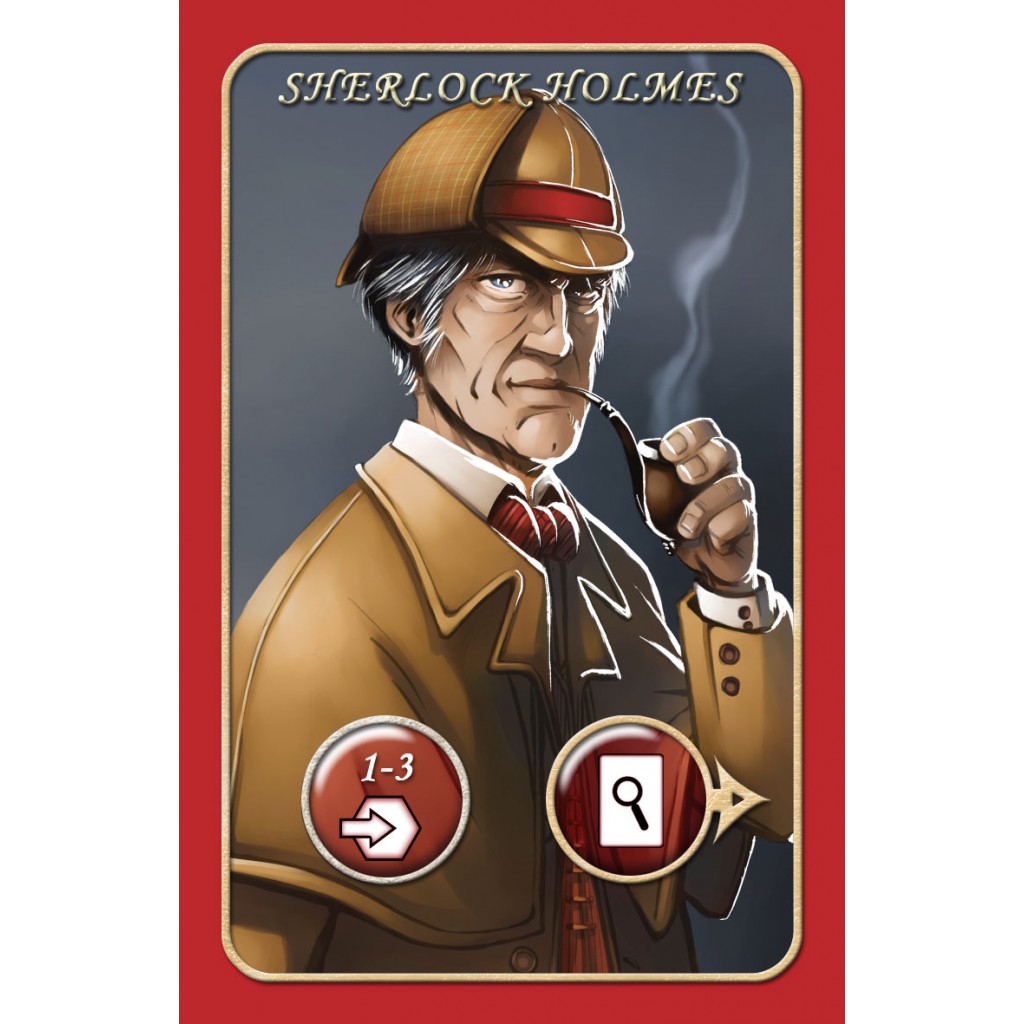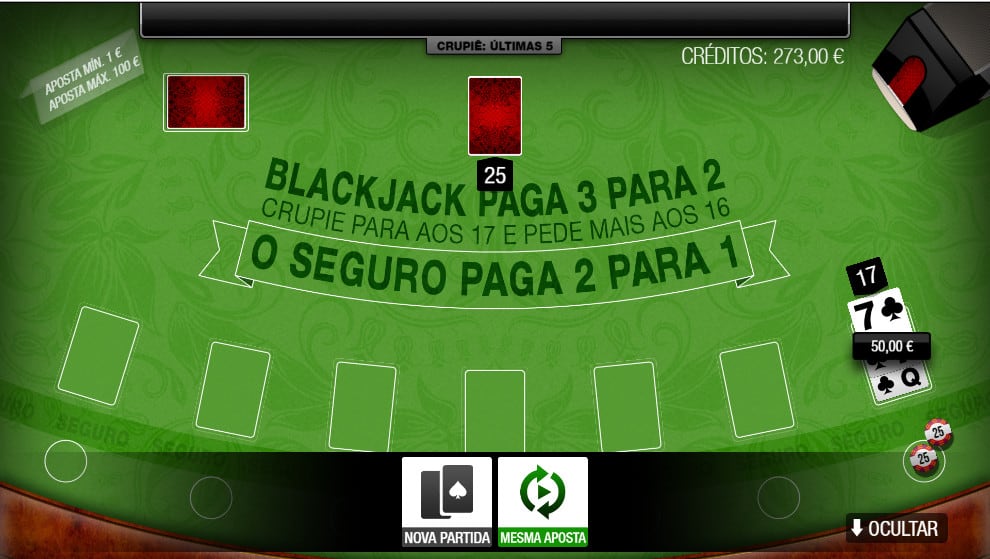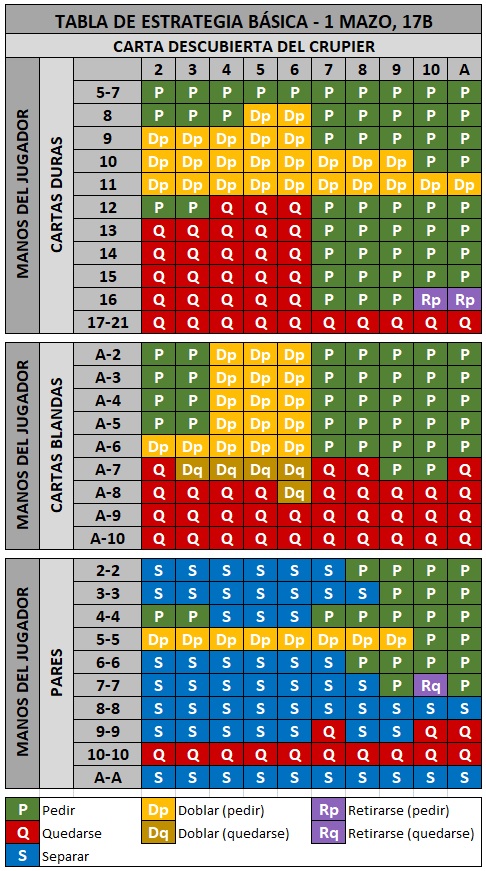Seleção de juízes concluída
Após vários dias de seleção, todos os 18 juízes do júri foram escolhidos, marcaando o fim de 💷 uma etapa e o início de outra no julgamento.
mitzvahceremonies.com:2024/11/23 2:31:50


Após a seleção de todos os 18 juízes, o julgamento agora está previsto para se movimentar black jackist direção a 💷 declarações iniciais na próxima semana. Enquanto isso, houve um incidente fora do prédio do tribunal, onde um homem supostamente se 💷 incendiou.
Após vários dias de seleção, todos os 18 juízes do júri foram escolhidos, marcaando o fim de 💷 uma etapa e o início de outra no julgamento.
Agora, com o júri black jackist vigor, o julgamento 💷 pode seguir black jackist frente para as declarações iniciais, que estão marcadas para a próxima semana.
O Blackjack é um jogo de azar popular em black jackist todo o mundo, incluindo o Brasil. Com regras fáceis de aprender e uma mistura de sorte e estratégia, o jogo atrai milhões de jogadores de casino a cada ano. Neste artigo, vamos introduzir alguns dos aspectos básicos do Blackjacke, especialmente focadas nas regras oficiais e como ganhar.
O Blackjack tem por objetivo se aproximar o mais possível de 21, um número máximo, sem passar. Se um jogador passar de 21 a perde automaticamente, mesmo que o dealer também passe da contagem máxima.
Cada jogador recebe duas cartas, posicionadas viradas para cima, enquanto o dealer recebe uma carta virada para cima e outra para baixo. O dealler começa a partida, pedindo aos jogadores para decidirem se pegar mais cartas (Hit) ou parar (Stand). O jogador sempre atua antes do deaer e tem algumas opções adicionais ao longo da partida:
No Blackjack, cada carta tem um valor:
Quando um jogador ou o dealer alcançarem um total próximo a 21, vence o que esteja mais próximo desse número. Se ambos tiverem um final igual, é um empate (Push).
Quando um jogador ganha e tem um total de 21 com suas duas primeiras cartas, é chamado de "Blackjack", que paga 3 para 2 (3 vezes a aposta inicial), caso contrário, pagamentos são de 1 para 1.

Card game
"Poker player" redirects here. For the magazine, see Poker Player
A game of
Texas hold 'em in progress. "Hold 'em" 🍌 is a popular form of poker.
Poker is a family of
comparing card games in which players wager over which hand 🍌 is best according to that
specific game's rules. It is played worldwide, but in some places the rules may vary.
🍌 While the earliest known form of the game was played with just 20 cards, today it is
usually played with 🍌 a standard deck, although in countries where short packs are
common, it may be played with 32, 40 or 48 🍌 cards.[1] Thus poker games vary in deck
configuration, the number of cards in play, the number dealt face up or 🍌 face down, and
the number shared by all players, but all have rules that involve one or more rounds of
🍌 betting.
In most modern poker games, the first round of betting begins with one or more
of the players making some 🍌 form of a forced bet (the blind or ante). In standard poker,
each player bets according to the rank they 🍌 believe their hand is worth as compared to
the other players. The action then proceeds clockwise as each player in 🍌 turn must
either match (or "call") the maximum previous bet, or fold, losing the amount bet so
far and all 🍌 further involvement in the hand. A player who matches a bet may also
"raise" (increase) the bet. The betting round 🍌 ends when all players have either called
the last bet or folded. If all but one player folds on any 🍌 round, the remaining player
collects the pot without being required to reveal their hand. If more than one player
remains 🍌 in contention after the final betting round, a showdown takes place where the
hands are revealed, and the player with 🍌 the winning hand takes the pot.
With the
exception of initial forced bets, money is only placed into the pot voluntarily 🍌 by a
player who either believes the bet has a positive expected value or who is trying to
bluff other 🍌 players for various strategic reasons. Thus, while the outcome of any
particular hand significantly involves chance, the long-run expectations of 🍌 the players
are determined by their actions chosen on the basis of probability, psychology, and
game theory.
Poker has increased in 🍌 popularity since the beginning of the 20th century
and has gone from being primarily a recreational activity confined to small 🍌 groups of
enthusiasts to a widely popular activity, both for participants and spectators,
including online, with many professional players and 🍌 multimillion-dollar tournament
prizes.[2]
History [ edit ]
While poker's exact origin is the subject of debate, many
game scholars point to the 🍌 French game Poque and the Persian game As-Nas as possible
early inspirations.[3] For example, in the 1937 edition of Foster's 🍌 Complete Hoyle, R.
F. Foster wrote that "the game of poker, as first played in the United States, five
cards 🍌 to each player from a twenty-card pack, is undoubtedly the Persian game of
As-Nas." However, in the 1990s the notion 🍌 that poker is a direct derivative of As-Nas
began to be challenged by gaming historians including David Parlett. What is 🍌 certain,
however, is that poker was popularized in the American South in the early 19th century,
as gambling riverboats in 🍌 the Mississippi River and around New Orleans during the 1830s
helped spread the game. One early description of poker was 🍌 played on a steamboat in
1829 is recorded by the English actor, Joe Cowell. The game was played with twenty
🍌 cards ranking from Ace (high) to Ten (low).[4]
In contrast to this version of poker,
seven-card stud only appeared in the 🍌 middle of the 19th century, and was largely spread
by the US military.[5] It became a staple in many casinos 🍌 following the second world
war, and grew in popularity with the advent of the World Series of Poker in the
🍌 1970s.[6]
Texas hold 'em and other community card games began to dominate the gambling
scenes over the next couple of decades. 🍌 The televising of poker was a particularly
strong influence increasing the popularity of the game during the turn of the
🍌 millennium, resulting in the poker boom a few years later between 2003 and 2006. Today
the game has grown to 🍌 become an extremely popular pastime worldwide.
Gameplay [ edit
]
Further information on betting rules: Betting in poker
In casual play, the right 🍌 to
deal a hand typically rotates among the players and is marked by a token called a
dealer button (or 🍌 buck). In a casino, a house dealer handles the cards for each hand,
but the button (typically a white plastic 🍌 disk) is rotated clockwise among the players
to indicate a nominal dealer to determine the order of betting. The cards 🍌 are dealt
clockwise around the poker table, one at a time.
One or more players are usually
required to make forced 🍌 bets, usually either an ante or a blind bet (sometimes both).
The dealer shuffles the cards, the player on the 🍌 chair to their right cuts, and the
dealer deals the appropriate number of cards to the players one at a 🍌 time, beginning
with the player to their left. Cards may be dealt either face-up or face-down,
depending on the variant 🍌 of poker being played. After the initial deal, the first of
what may be several betting rounds begins. Between rounds, 🍌 the players' hands develop
in some way, often by being dealt additional cards or replacing cards previously dealt.
At the 🍌 end of each round, all bets are gathered into the central pot.
At any time
during a betting round, if one 🍌 player bets, no opponents choose to call (match) the
bet, and all opponents instead fold, the hand ends immediately, the 🍌 bettor is awarded
the pot, no cards are required to be shown, and the next hand begins. This is what
🍌 makes bluffing possible. Bluffing is a primary feature of poker, distinguishing it from
other vying games and from other games 🍌 that use poker hand rankings.
At the end of the
last betting round, if more than one player remains, there is 🍌 a showdown, in which the
players reveal their previously hidden cards and evaluate their hands. The player with
the best 🍌 hand according to the poker variant being played wins the pot. A poker hand
comprises five cards; in variants where 🍌 a player has more than five cards available to
them, only the best five-card combination counts. There are 10 different 🍌 kinds of poker
hands, such as straight flush and four of a kind.
Variants [ edit ]
2006 WSOP Main
Event table
Poker 🍌 has many variations,[7][8] all following a similar pattern of play[9]
and generally using the same hand ranking hierarchy. There are 🍌 four main families of
variants, largely grouped by the protocol of card-dealing and betting:
Straight A
complete hand is dealt to 🍌 each player, and players bet in one round, with raising and
re-raising allowed. This is the oldest poker family; the 🍌 root of the game as now played
was a game known as Primero, which evolved into the game three-card brag, 🍌 a very
popular gentleman's game around the time of the American Revolutionary War and still
enjoyed in the U.K. today. 🍌 Straight hands of five cards are sometimes used as a final
showdown, but poker is almost always played in a 🍌 more complex form to allow for
additional strategy. Stud poker Cards are dealt in a prearranged combination of
face-down and 🍌 face-up rounds, or streets, with a round of betting following each. This
is the next-oldest family; as poker progressed from 🍌 three to five-card hands, they were
often dealt one card at a time, either face-down or face-up, with a betting 🍌 round
between each. The most popular stud variant today, seven-card stud, deals two extra
cards to each player (three face-down, 🍌 four face-up) from which they must make the best
possible 5-card hand.
Draw poker Five-card draw: A complete hand is dealt 🍌 to each
player, face-down. Then each player must place an ante to the pot. They can then see
their cards 🍌 and bet accordingly. After betting, players can discard up to three cards
and take new ones from the top of 🍌 the deck. Then, another round of betting takes place.
Finally, each player must show their cards and the player with 🍌 the best hand
wins.
Community card poker Also known as "flop poker," community card poker is a
variation of stud poker. 🍌 Players are dealt an incomplete hand of face-down cards, and
then a number of face-up community cards are dealt to 🍌 the center of the table, each of
which can be used by one or more of the players to make 🍌 a 5-card hand. Texas hold 'em
and Omaha are two well-known variants of the community card family.
There are several
methods 🍌 for defining the structure of betting during a hand of poker. The three most
common structures are known as "fixed-limit," 🍌 "pot-limit," and "no-limit." In
fixed-limit poker, betting and raising must be done by standardized amounts. For
instance, if the required 🍌 bet is X, an initial bettor may only bet X; if a player
wishes to raise a bet, they may 🍌 only raise by X. In pot-limit poker, a player may bet
or raise any amount up to the size of 🍌 the pot. When calculating the maximum raise
allowed, all previous bets and calls, including the intending raiser's call, are first
🍌 added to the pot. The raiser may then raise the previous bet by the full amount of the
pot. In 🍌 no-limit poker, a player may wager their entire betting stack at any point that
they are allowed to make a 🍌 bet. In all games, if a player does not have enough betting
chips to fully match a bet, they may 🍌 go "all-in," allowing them to show down their hand
for the number of chips they have remaining.
While typical poker games 🍌 award the pot to
the highest hand as per the standard ranking of poker hands, there are variations where
the 🍌 best hand, and thus the hand awarded the pot, is the lowest-ranked hand instead. In
such games the best hand 🍌 contains the lowest cards rather than the highest cards; some
variations may be further complicated by whether or not hands 🍌 such as flushes and
straights are considered in the hand rankings. There are also games where the highest
and lowest 🍌 hands divide the pot between them, known as "high low split" games.
Other
games that use poker hand rankings may likewise 🍌 be referred to as poker. Video poker is
a single-player video game that functions much like a slot machine; most 🍌 video poker
machines play draw poker, where the player bets, a hand is dealt, and the player can
discard and 🍌 replace cards. Payout is dependent on the hand resulting after the draw and
the player's initial bet.
Strip poker is a 🍌 traditional poker variation where players
remove clothing when they lose bets. Since it depends only on the basic mechanic of
🍌 betting in rounds, strip poker can be played with any form of poker; however, it is
usually based on simple 🍌 variants with few betting rounds, like five card draw.
Another
game with the poker name, but with a vastly different mode 🍌 of play, is called
Acey-Deucey or Red Dog poker. This game is more similar to Blackjack in its layout and
🍌 betting; each player bets against the house, and then is dealt two cards. For the
player to win, the third 🍌 card dealt (after an opportunity to raise the bet) must have a
value in-between the first two. Payout is based 🍌 on the odds that this is possible,
based on the difference in values of the first two cards. Other poker-like 🍌 games played
at casinos against the house include three card poker and pai gow poker.
Computer
programs [ edit ]
A variety 🍌 of computer poker players have been developed by
researchers at the University of Alberta, Carnegie Mellon University, and the
University 🍌 of Auckland amongst others.
In a January 2024 article[10] published in
Science, a group of researchers mostly from the University of 🍌 Alberta announced that
they "essentially weakly solved" heads-up limit Texas Hold 'em with their development
of their Cepheus poker bot. 🍌 The authors claimed that Cepheus would lose at most 0.001
big blinds per game on average against its worst-case opponent, 🍌 and the strategy is
thus so "close to optimal" that "it can't be beaten with statistical significance
within a lifetime 🍌 of human poker playing."[11]
See also [ edit ]
References [ edit
]
Literature [ edit ]
Parlett, David (2008), The Penguin Book of 🍌 Card Games, London:
Penguin, ISBN 978-0-141-03787-5
2024/11/23 2:31:50